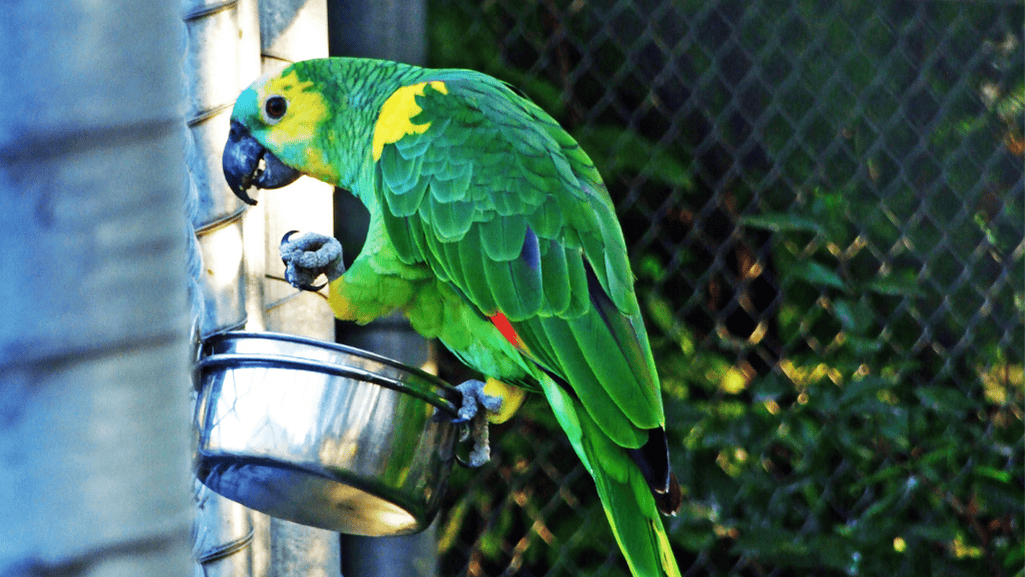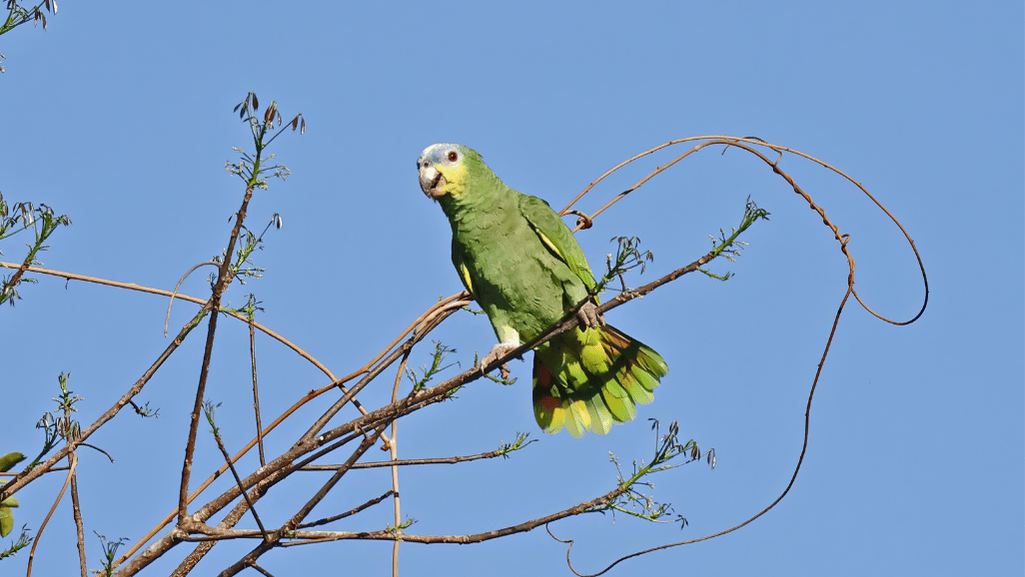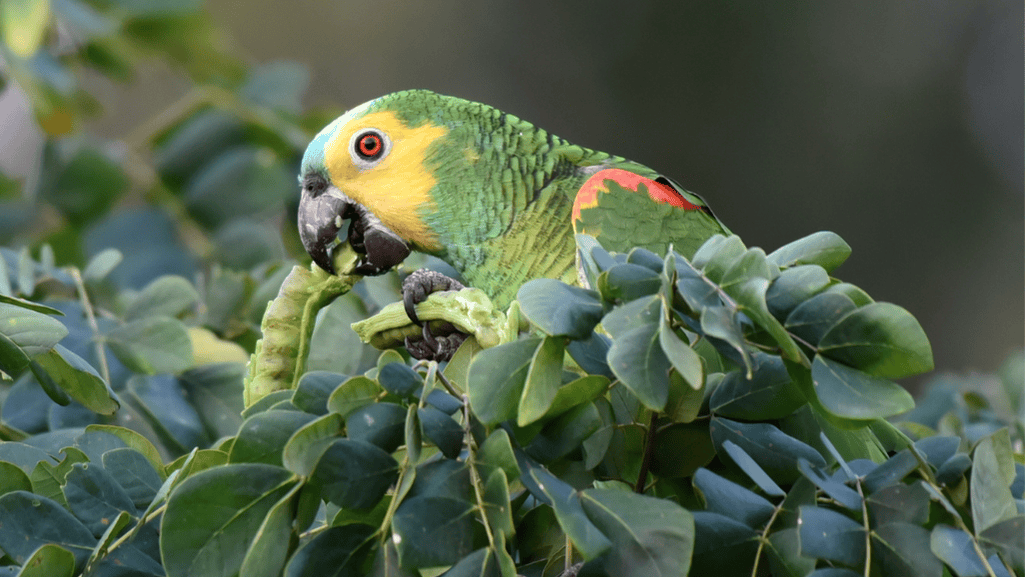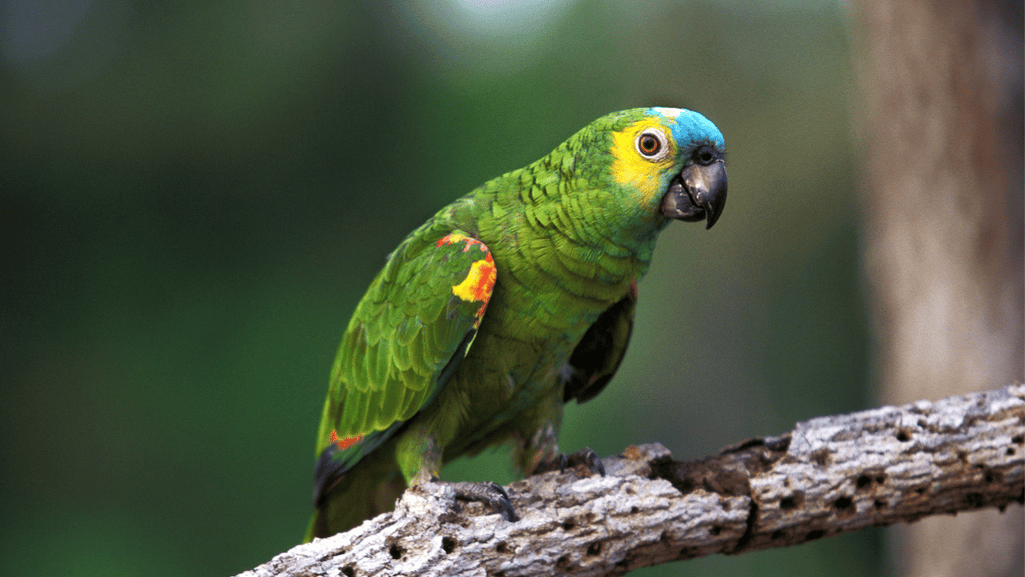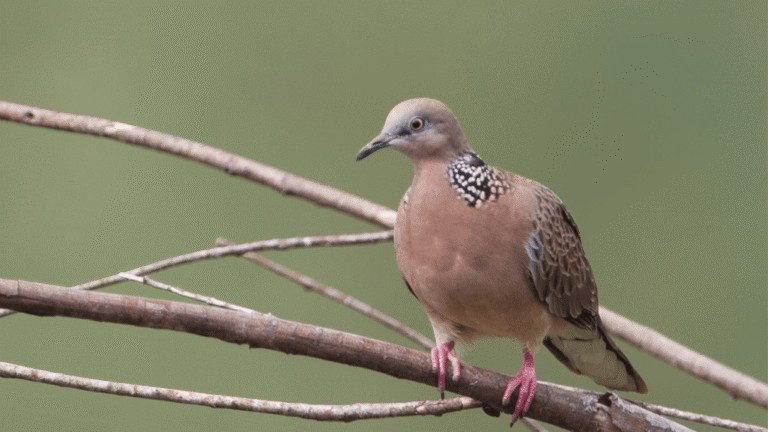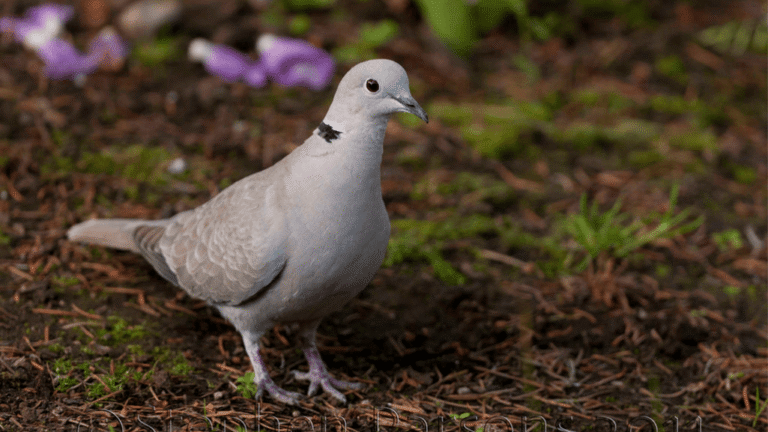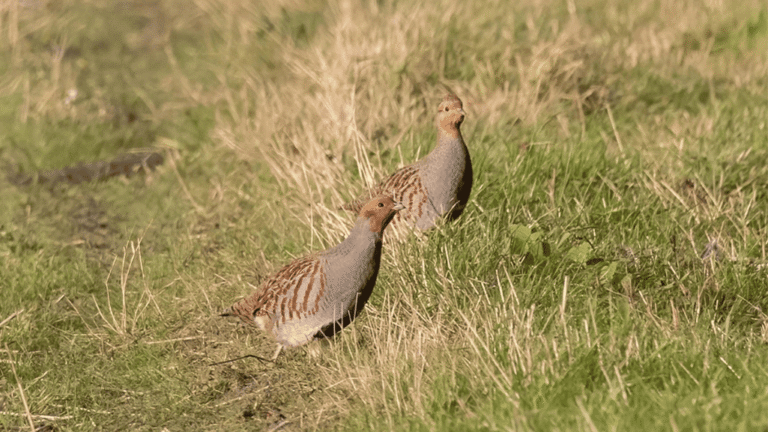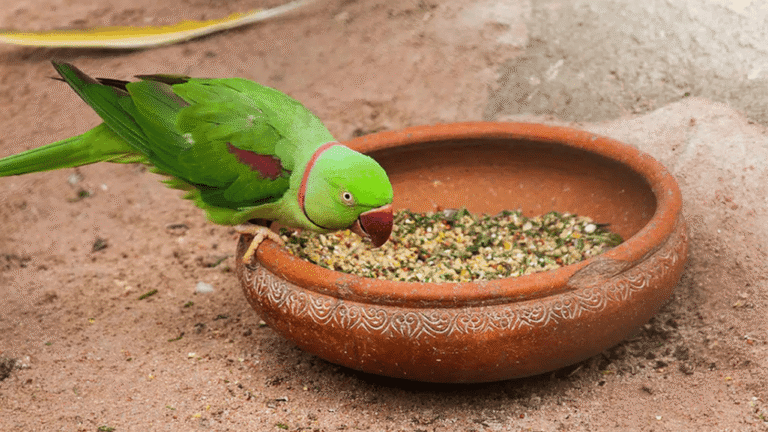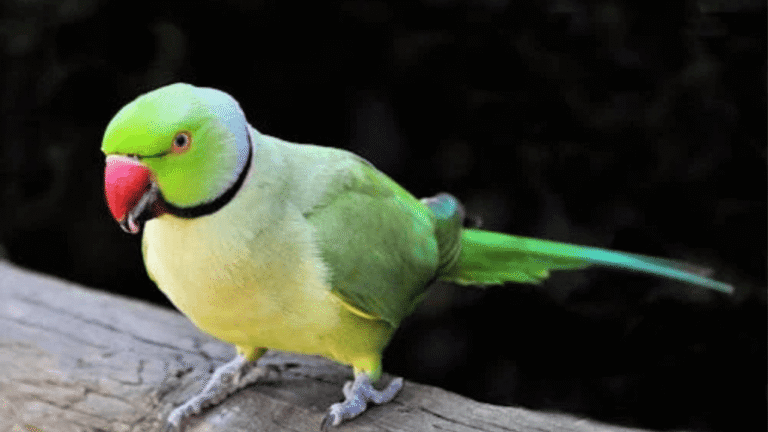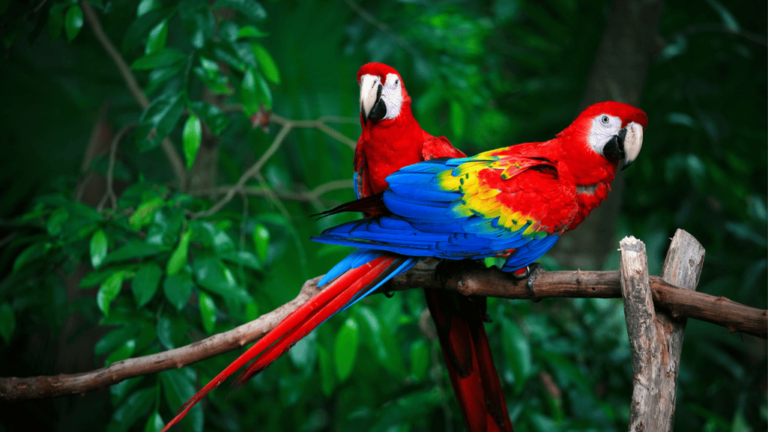In the world of exotic birds, the turquoise fronted amazon parrot stands out. It has dazzling blue feathers on its forehead that catch everyone’s eye. This parrot is loved for its beauty, friendly nature, smartness, and ability to talk like humans.
The turquoise fronted amazon parrot is known for its social nature. It loves to talk and play with both humans and other birds. This bird shows the beauty of nature and the joy of connecting with animals. Learn more about this vibrant bird and why it’s a great choice for bird lovers.
Key Takeaways
- The turquoise fronted amazon parrot is a spectacle in the avian kingdom, adored for its vibrant plumages and charismatic demeanor.
- Esteemed by exotic bird enthusiasts, these parrots are a source of endless fascination and joy to pet lovers.
- These intelligent birds have an innate ability to mimic sounds and speech, adding to their appeal as family pets.
- Understanding the turquoise fronted amazon’s behavior is crucial for a harmonious pet-owner relationship.
- The care for a turquoise fronted amazon parrot goes beyond aesthetics, encompassing their diet, habitat, and social needs.
Discovering the Turquoise Fronted Amazon Parrot
Exploring the Turquoise Fronted Amazon Parrot is an exciting journey. It starts with their vibrant life and where they come from. These parrots live in the green forests of South America. They are found in places like Brazil, Paraguay, and Argentina, showing the area’s rich life.
Origin and Geographic Distribution
The Turquoise Fronted Amazon Parrot lives in southeastern Brazil, Paraguay, and northern Argentina. They thrive in different habitats, showing their strength and flexibility. Their ability to live in feral populations in places like Brazil and Germany shows how adaptable they are.
Physical Characteristics of this Vibrant Parrot
The Turquoise Fronted Amazon Parrot is a masterpiece of nature. They are 14 to 16 inches long and weigh 400 to 500 grams. They can live up to 50 years, making them great friends for a long time.
Their most striking feature is their bright colors. They have greens and a turquoise blue on their front feathers. This makes them stand out in South America’s green landscapes. Their beauty is why they are loved by bird watchers and why they need proper care.
These birds are not only beautiful but also friendly. They make great pets. But, it’s important for future owners to learn everything about caring for them.
Unveiling the Natural Habitat of Turquoise Fronted Amazon
The turquoise fronted amazon habitat is deeply connected to the rich biodiversity of South American forests. These parrots live in places with dense forests but still get enough sunlight. This mix of light and shade is perfect for their needs.
Learning about the natural habitat of these birds helps us understand their behaviors. They love the humid, green forests and riverine woodlands. These places give them food, shelter, and places to nest, which are key for their survival.
- Habitats rich in fruit-bearing trees and shrubbery
- Nesting sites situated in taller trees, often near water sources
- Diverse vegetation that supports a variety of insect and plant species, contributing to a balanced diet
It’s vital to protect these natural habitats for the turquoise fronted amazon and the whole ecosystem. We must fight deforestation and environmental harm to save these areas.
“The ecosystems these amazons call home are as vibrant and dynamic as the birds themselves.”
The South American forests are crucial for the turquoise fronted amazon’s life. These forests are more than just homes; they are sanctuaries. Here, the parrots can live their lives as nature intended.
The Diet Essentials for a Healthy Turquoise Fronted Amazon
Keeping a Turquoise Fronted Amazon parrot healthy means paying close attention to their diet. Knowing what they eat is key to their well-being. This knowledge helps them live a long, vibrant life.
Natural Diet in the Wild
In South America, these birds eat lots of fruits, seeds, and nuts. Their diet is full of variety. It keeps them healthy and happy.
- Fruits such as berries and figs
- Assortments of seeds
- Nourishing nuts
- Lush, leafy greens
This diet helps them stay strong and look beautiful.
Creating a Balanced Diet for Pet Amazons
When you bring one home, try to match their natural diet as much as you can. A balanced diet should include:
- Pellets made for parrots
- Fresh fruits and veggies every day
- Supplements when a vet says so
This diet keeps them healthy and makes them think like they do in the wild. Pellets are key for a balanced diet. Fruits and veggies add variety and make their care better.
Feeding them at the same times every day is important. Amazons like routine. It keeps them from getting stressed or too fat. Always have fresh water ready for them.
Knowing and following these diet tips is crucial for a happy, healthy turquoise fronted amazon. With the right food, they can live a vibrant life, showing off their beauty and smarts.
Understanding Turquoise Fronted Amazon Behavior
The Turquoise Fronted Amazon shows fascinating behaviors. These are important for bird lovers and those thinking of getting one as a pet. Learning about their lives helps us understand how they survive and interact with each other.
Social Interaction and Communication
Turquoise Fronted Amazons love to be around others. They live in groups, which is key to their happiness. They use different sounds to talk to each other, creating a special language.
These birds also connect with humans. They can form strong bonds with their owners, showing love and affection.
- Extensive vocal range to communicate effectively within the flock.
- Capability to mimic human speech, enhancing interaction with pet owners.
Mating and Reproductive Habits
When it comes to mating and breeding turquoise fronted amazons, they have unique ways. They perform special dances and show off their feathers. This helps them bond and create a safe place for their babies.
- Monogamous nature generally leading to long-term pair bonding.
- Engagement in nurturing behaviors by both parents post-hatching.
Learning about the turquoise fronted amazon behavior is crucial. It helps us understand their complex lives. By studying their social interaction, communication, mating, and breeding habits, we can better care for them in the wild and in captivity.
Comprehensive Care Guide for Turquoise Fronted Amazon
Choosing a Turquoise Fronted Amazon as a pet means you must understand their needs. These birds are known for being social and lively. They make great exotic pets, but they need special exotic pet care to stay healthy.
First, you need to create a good home for them. Experts say they need a cage that’s at least 40″ x 30″ x 72″ big. This gives them room to move and play. Adding perches, ladders, and toys helps keep them mentally and physically active.
- These birds need lots of time with their owners. They should get 2 to 3 hours of attention every day. This helps them bond and prevents problems like aggression or feather picking.
- Feeding them right is key. They should eat high-quality pellets, fresh fruits and veggies, and sometimes seeds. A detailed guide can help you feed them well.
- It’s also important to take them to the vet regularly. This helps catch and treat health problems early, like obesity or liver disease.
Getting enough sleep is also crucial. Turquoise Fronted Amazons need 10 to 12 hours of sleep each night. This keeps them healthy and happy.
Remember, these birds can live up to 55 years. So, if you choose them as pets, you’re making a big commitment. They can be wonderful companions for a long time, but you must care for them well.
If you’re thinking about getting one, it’s important to know how to take care of them. This article has lots of tips on their diet and social needs. It helps you make sure you can give them the best exotic pet care.
Captivating Facts About Turquoise Fronted Amazon Lifespan
The longevity of birds, especially the turquoise fronted amazon, is quite interesting. These amazon parrots are not just beautiful but also very intelligent. They show how resilient birds can be and how they can be great companions for a long time.
With the right care, a turquoise fronted amazon can live up to 20 years. This is a remarkable lifespan for a bird. Their life span depends a lot on their environment and the care they get. Whether in the wild or as pets, they can live a long life if they are well taken care of.
The turquoise fronted amazon is a special bird in the amazon parrot family. Parrots are known for living a long time. Many species can even outlive their human friends.
- They can mimic human speech and do tricks, making them great friends for a long time.
- Good food, regular vet visits, and a fun environment help them live longer.
- They love to be around people, which makes their life better and longer.
Learning about the turquoise fronted amazon’s lifespan helps us understand how to care for them. It also shows the strong bond that can form between humans and these birds. They are more than pets; they are lifelong friends who need love and care.
What to Consider Before Choosing Turquoise Fronted Amazon as Your Pet
Thinking about getting a turquoise fronted amazon pet option is more than just loving their colors and charm. You must think about several important things to make sure you can take care of them. Here’s what you need to check:
Turquoise Fronted Amazon Temperament: These birds are smart and love to be around people. Knowing their behavior is key because they need lots of attention and training. They can get loud and energetic, so you must be ready to handle it.
- They bond strongly with their families.
- They need lots of mental and physical play.
- They might act out if they get bored or ignored.
Pet Bird Care: The health and happiness of a turquoise fronted amazon depend a lot on how well you care for them. Since they can live up to 80 years, you’re making a big commitment. Here’s what you need to do:
- Give them a big cage where they can move around.
- Feed them a balanced diet of pellets, fruits, and veggies.
- Take them to the vet regularly to keep them healthy.
Pet Bird Selection: Picking a turquoise fronted amazon should be a thoughtful choice. Make sure you can give them a good home and are ready for a long-term commitment. Look for them from trusted breeders or rescue groups to get a healthy and friendly bird.
In short, the Turquoise Fronted Amazon is a lively and rewarding pet. But, they need a lot of care and attention. By thinking carefully about these things, you can start a happy and meaningful life with your new bird.
The Temperament of Turquoise Fronted Amazon Parrots
Exploring the turquoise amazon bird reveals a world of vibrant behaviors and traits. These birds are not just beautiful but also full of personality. They are playful, affectionate, and have a strong voice, showcasing the turquoise fronted amazon personality.
Compatibility with Humans
The turquoise amazon bird is very compatible with humans. They form deep bonds with their owners. These birds love to interact and can fit well into families if treated right.
They are great at communicating and being active. This makes them perfect for those who want a lively companion at home.
Common Behavioral Traits
The turquoise fronted amazon has complex behaviors that are both engaging and demanding. They are very smart and need toys, puzzles, and interaction to stay happy and healthy. Their loud calls and songs are a sign of their natural instincts.
- Affectionate and sociable with familiar faces
- Can be trained to perform tricks and mimic sounds
- Potential for occasional territorial or aggressive behaviors if not properly socialized
- Requires consistent engagement and discipline to manage their smart, sometimes mischievous nature
Understanding and meeting the turquoise fronted amazon personality and their common behavioral traits is key. It ensures the bird’s well-being and creates a rewarding relationship for both the parrot and its owners.
Insider Tips: Breeding the Turquoise Fronted Amazon
When you start turquoise-fronted amazon breeding, it’s key to follow some important steps. First, you need a big cage, about 24 by 42 by 48 inches. Also, a nesting box, 12 by 12 by 24 inches, with a 4-inch hole is essential.
It’s vital to know how these birds behave when breeding. The female lays eggs every three to four days. Incubation starts after the second egg. Not all eggs will hatch, and the male may get aggressive to protect the nest.
- Watching their eating habits is crucial during breeding. They need a mix of seeds and a mash of fruits, veggies, beans, and rice, with added vitamins and minerals.
- At first, the pair might not like the mash. But, they will start to prefer it over seeds as time goes on.
- Keep an eye out for any signs of stress or discomfort. These can stop breeding from happening.
Similar challenges in breeding and diet are seen in other parrots, like the Blue Headed Parrot. This shows that these birds need similar care.
Using these breeding tips helps create a natural environment. This makes breeding easier and stress-free for the birds.
Success in breeding turquoise-fronted amazons depends on paying attention to their needs. This includes providing the right nesting materials and a balanced diet. Understanding their needs brings joy and life to your home.
Where to Find Turquoise Fronted Amazon for Sale
For bird lovers, finding a turquoise fronted amazon for sale is an exciting adventure. These birds are known for their bright colors and friendly nature. Before purchasing parrots, it’s important to learn about their price and care needs.
Start by visiting reputable breeders or bird shops. Look for places that care about the birds’ health and well-being. Make sure to ask about the bird’s health history and get proof of vet care.
Online platforms for exotic birds for sale are also worth checking. These sites offer detailed bird profiles and connections to experienced breeders. Always read reviews and check ratings to make a smart choice. Visit bird conservation websites for trusted breeder links.
- Ask for detailed health and breeding history of the bird
- Ensure the seller provides certification of the bird’s captive breeding.
- Verify if the bird has been raised in a spacious environment that allows natural behaviors
Understanding the turquoise fronted amazon price is key. Prices change based on the bird’s age, health, and color. So, plan a budget for the bird’s care, including food, housing, and vet visits.
Buying from responsible sellers helps these amazing birds. Make sure you’re ready to provide a loving home for your new feathered friend.
Conclusion
Colorful parrots like the turquoise fronted amazon have always amazed us. We’ve learned about their unique traits and how to care for them. These birds, found in South America’s Amazonia, need our help due to deforestation and illegal trade.
The turquoise fronted amazon can live up to 70 years in captivity. They form long-lasting monogamous relationships and breed from August to December. Their diet includes native seeds, fruits, nuts, and flowers.
These birds communicate in nine different ways, including vocalizations and touch. Despite poaching threats, laws in the U.S. and Europe offer hope. By learning about these birds, we can create better homes for them.
Let’s celebrate the beauty of the turquoise fronted amazon. Our admiration should lead to conservation efforts and informed care. This way, these amazing birds can thrive for many years.


